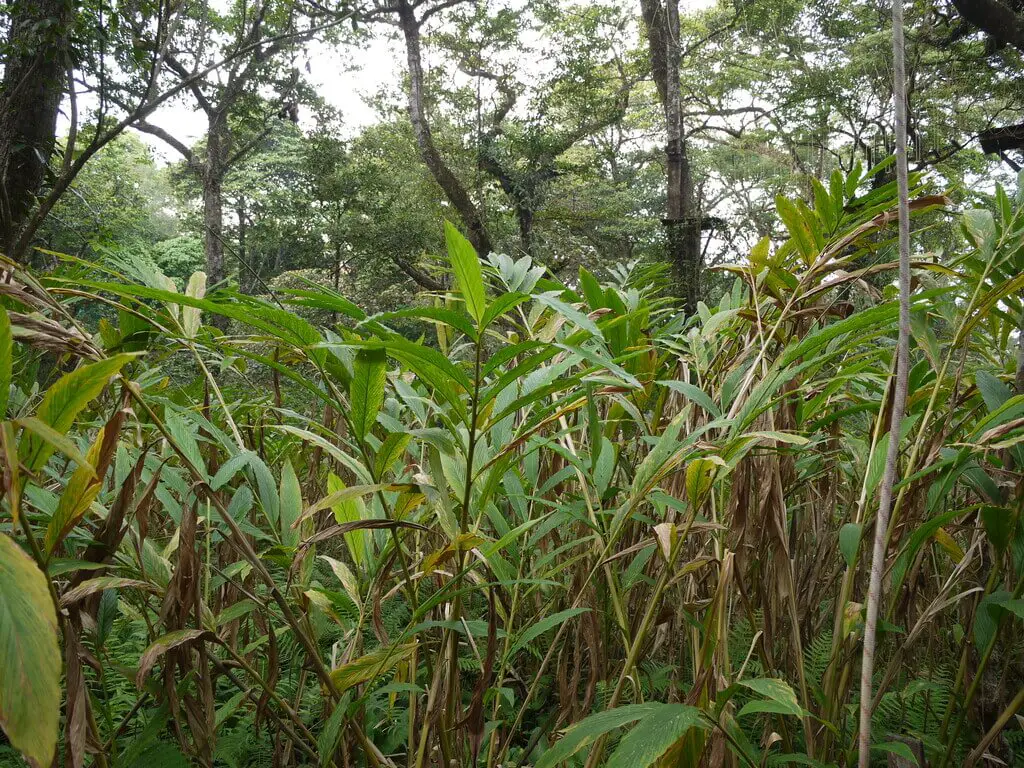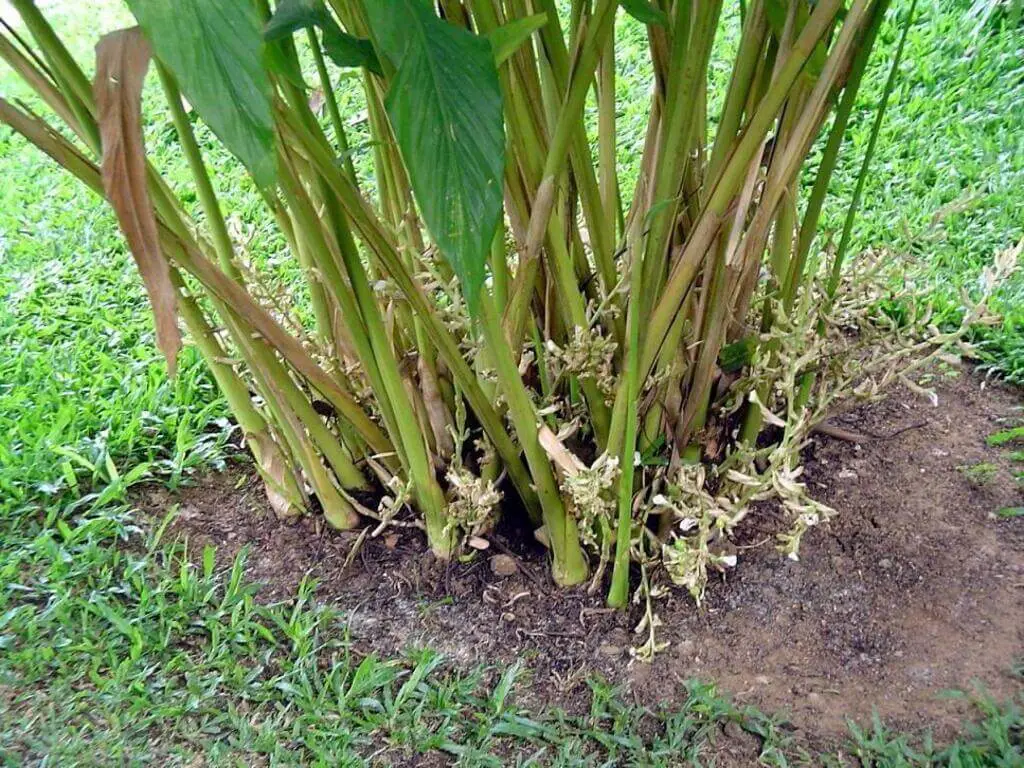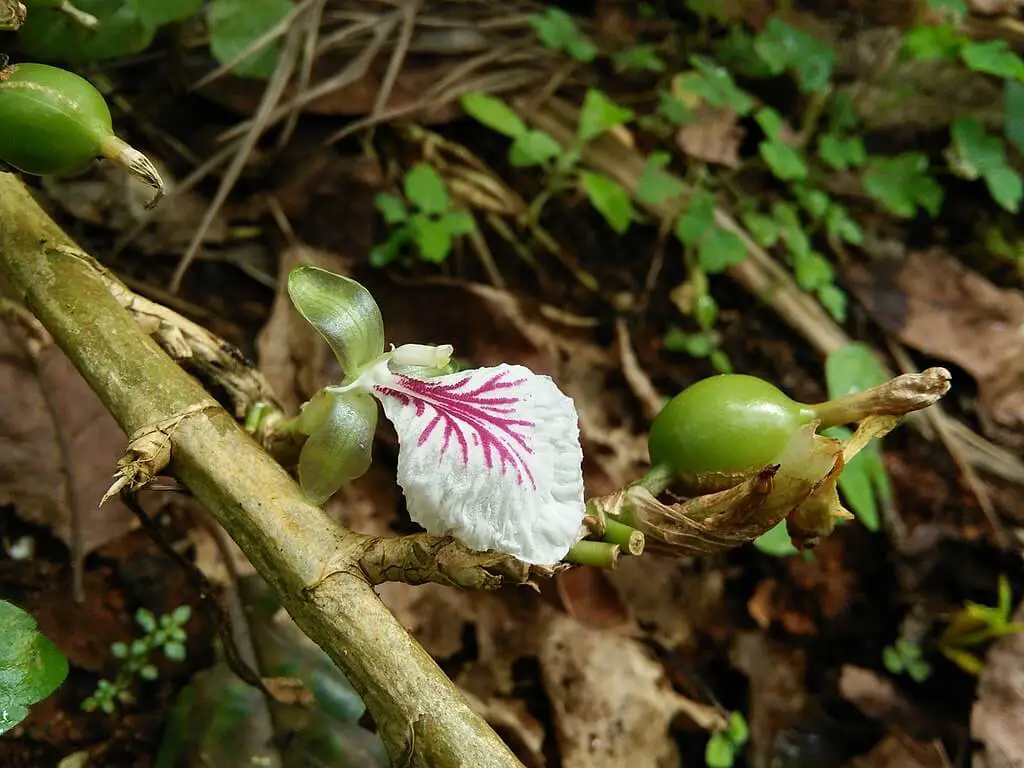All about Elaichi Tree
Elaichi Tree bears Elaichi Fruit. This fruit is commonly known as Elaichi or Cardamom. This spice is derived from the seeds of various plants in the genera Amomum and Elettaria. Both of these genera belong to the family Zingiberaceae. Both of these genera are also indigenous to Indonesia and Indian subcontinent regions.
This article focuses on Elaichi tree, propagation, maintenance and uses.
Generally, the seed pods of the trees from these genera are small. Having spindle-shaped bodies, they are triangular in cross-sections. They also have a thin, paper-like outer shell. Naturally, these pods have small, black seeds contained in them.
Amomum pods are larger and have dark brown color. Elettaria pods are smaller and have light green color.
Normally, the Elaichi Tree (Elettaria) grows 10 feet tall. It has rigid stems and almost 2 feet long leaves. From the mega rhizomes underground, these plants regrow every year.
Naturally, these tropical trees prefer to grow in partially shaded areas, where soil pH value is about 6.1 – 6.6. In USDA Zones 10 – 11, these plants can be grown as outdoor perennial. In fact, these plants donot grow well other Zones or indoors.
Table of Contents
Elaichi Tree – History

Photo by Dinesh Valke (CC BY-SA 2.0)
In the grammar world, Ancient Sanskrit texts refer to the fruit as “ela”.
For more than 4,000 years, Elaichi trees have been playing a distinct role in human culture. Humans use them as spices in their foods. Also, these spices have high commercial values.
Since the Early Bronze Age, Assyrians and Babylonians have traded this fruit commercially. The famous Greek physicians, Dioscorides and Hippocrates, identified Elaichi’s therapeutic properties. They also recommended it as an aid for digestive problems.
Cardamom trade grew as a lucrative business following huge demands in Rome and Greece. In 126 CE, Alexandria imposed import taxes on cardamom. Venice played an important role as a major importer of cardamom, cinnamon, pepper, and cloves during medieval times.
Arabian subcontinent, particularly Yemen imported cardamom from India and China as early as the Tenth century. Also, the Portuguese involved in the Elaichi trade from the 16th century onwards, as it conquered the western part of India. However, Europeans seriously focused on the Elaichi trade only from the 19th century onwards.
Elaichi Tree – Propagation
Seeds
It is advisable to purchase seeds that are prepared specifically for planting. Just opening a few pods and using the raw seeds may not cater to successful germination.
Place the seeds in a large bowl. Pour 2.5 percent nitric acid solution. Stir the mixture well for about 2 – 3 minutes slowly. After that, Pour the mixture into a strainer and rinse the seeds.
Then, place the seeds in a clean bowl and pour lukewarm water. Keep this mixture at normal room temperature for about 12 hours, overnight.
Plant the seeds 1/8 inch deep in soil treated with Humus. Also, make sure to distance them at least 1/2 inch apart.
You can also plant them in a pot initially then transplant them after they attain a matured growth.
Make sure to cover this arrangement with some mulch of grass or straw. You can expect germination in about a month’s time. For more detailed information on germination, refer to the manual supplied with seeds while purchasing.
Division
This is one of the easiest methods to propagate an Elaichi tree. Just dig out the existing tree that is atleast a year old. Using a sharp garden knife, carefully separate the rhizomes from the plant.
You can also cut the rhizomes into several sections and replant them. If the mother plant is infected with cardamom mosaic virus, it will transmit the same to the new plants. This is unavoidable. However, the infected plants can be treated.
Bare Root Plants

Photo by Pratheepps (Wikimedia Commons) (CC BY-SA 2.5)
In order to bypass the waiting time for the germination and initial caring, you can simply purchase bare-root plants from nurseries. The maintenance is also comparatively easy as the initial care is already done. On the flip side, bare-root plants are not available in all areas for purchase.
How to Care Elaichi Tree

Photo by David Stang (Wikimedia Commons) (CC BY-SA 4.0)
Elaichi trees love to grow in partially shaded areas with moist soils. Hence, water the plants regularly and do not allow the soil to dry. However, avoid overwatering as it can cause waterlogging. Waterlogging attracts many common plant diseases like root rots and stem rots.
Elaichi trees are generally accustomed to high humidity. So, mist’ them occasionally with water sprays. Make sure to use good quality Spray bottles for a uniform application’
It is also a best practice to feed these plants with fish emulsion twice a month.
If you have planted Elaichi seeds in a container, transfer it indoors if the temperature drops below 50 degrees Fahrenheit. Place it under a filtered bright light for about 7 – 8 hours.
Sometimes, these container-grown plants may get root bound which prevents blooming. If you encounter such situations, divide your plants and grow them in your garden.
Normally, these trees tend to flower in about three years from germination. Depending on the habitat, these trees have a life expectancy of about 13 – 15 years.
Indication of Problems in Elaichi Tree
Typically, the leaves of these trees can indicate various problems. They turn yellow as a sign of poor fertilization or iron deficiency. To cure this problem, feed the plants with balanced fertilizers as needed.
The leaves develop brown spots on their surfaces if the plant is overexposed to the sun. Arrange a shade so that the leaves can slowly recover.
If the Leaf tips turn brown, it is a sign of insufficient watering or low humidity. Hence, increase the watering frequency and mist the leaves regularly.
Controlling Pests and Diseases of an Elaichi Tree
Pests
The Black-Winged Insect (thrips) infection is common among these types of trees. These insects sting and suck out the sap from the foliage. To control them, use contact sprays such as insecticidal soaps, horticultural oil, or natural pyrethrins (plus piperonyl butoxide). Apply the liquids on the infection portions repeatedly until the infection ceases.
Some pests burrow in, lay eggs, and damage the roots. Then, the worms (nematodes), plunge out of the roots and stems. As a result, the trees may die and even fall off in some cases.
If you happen to encounter such a situation, immediately dig the plant up. Inspect for the severity of the root damage. If the damage is very minimal, it can be rectified with pesticides. If the damage is more than minimal, then destroy the plant as a whole.
After that, Treat the soil with a good quality chemical nematicide. Ensure the pests are completely destroyed before replanting.
Diseases
Typically, these trees are disease-free. However, dead stems or other debris may attract fungus and encourage disease. You can use fungicides to treat common plant diseases.
Harvesting Elaichi Tree

Photo by T. R. Shankar Raman (Wikimedia Commons) (CC BY-SA 3.0)
Normally, the long brackets of white flowers sprout out at stalk ends in matured plants. Sometimes, the flowers may have a light-yellow shade. In about 3 – 4 weeks, these flowers develop seed pods.
Once the Seedpods fully ripen, they begin to split slowly. After that, they begin to release the seeds. Ideally, the perfect time for harvest is just before the splitting commences or just before the seed pods fully ripen.
Normally, the ripened seedpods have black seeds and are easy to pluck. On the other hand, immature seed pods have white seeds and are often hard to pluck.
There are many ways to harvest. Commercial farming houses use Mechanical ways that include tools or machines. If you are plucking garden trees, you can do so with bare hands with proper Gear.
Start harvesting from the stalk end and move up gradually. Ripened seed pods do not offer resistance. Hence, pluck only the seed pods that are easy to pull off. Leave the resisting ones to ripe on the trees. Collect the harvest in a clean and dry bucket.
Preservation of Elaichi Fruit
Removing stems and other debris, wash the collected seed pods thoroughly in running water. Then, start the drying process immediately. In this way, you can retain the natural flavor for longer periods.
There are various methods available to dry the seed pods. Among them, using dehydrators is the easiest and quickest method to dry the harvest. It is also easy to control the moisture content and keep it under 10 percent in the final output.
However, do not set the temperature beyond 120 degrees Fahrenheit in dehydrators. Otherwise, the seed pods may decolorize or overburn, reducing the commercial value.
As a natural practice, you can also choose to dry the seed pods under the sun. However, there is a risk of color fading associated with this method. It is also difficult to control the moisture (below 10 percent) in the final output. Due to these factors, the commercial value of the yield may decrease.
Uses
Both Elettaria pods and Amomum pods are used as spices in cooking and also in medicine. Elettaria pods are smoked and also used as a masticatory. (Chewing agent, used for pleasure, medicine or to increase saliva flow)
Food and Beverage
In the bakery products, people of Nordic countries often use cardamom. For Instance, they use cardamom in Finnish sweet bread pulla, Scandinavian Yule bread Julekake, and Swedish sweet bun kardemummabullar Etc.,
The Middle east Population uses green cardamom powder as a traditional flavor in their daily tea and coffee. They also use it in their sweet dishes and savory Items.
Cardamom is the main ingredient in Asian foods. For example, Indian and Nepali famous masalas, Thai curry pastes, Sri Lankan flavor curries, Etc., make use of cardamom to attain their popular traditional flavors.
In fact, even the world-renowned companies like Wrigley’s use cardamom in their confectionery products. Similarly, the Korean tea makers use black cardamom in their world-famous offering called “jeho-tang” Tea.
Medicine
Historically, the ancient Greek physicians favored Elaichi tree and its fruit for the therapeutic properties in their medicine. They used cardamom to treat various digestive disorders.
In fact, cardamom plays a key role in the traditional medicine in some parts of the world including Indian subcontinent. For example, the most famous traditional forms of medicine like Ayurveda, Unani, Siddha, etc. use cardamom in their medicine to treat various diseases including stomach disorders and tooth related diseases.

